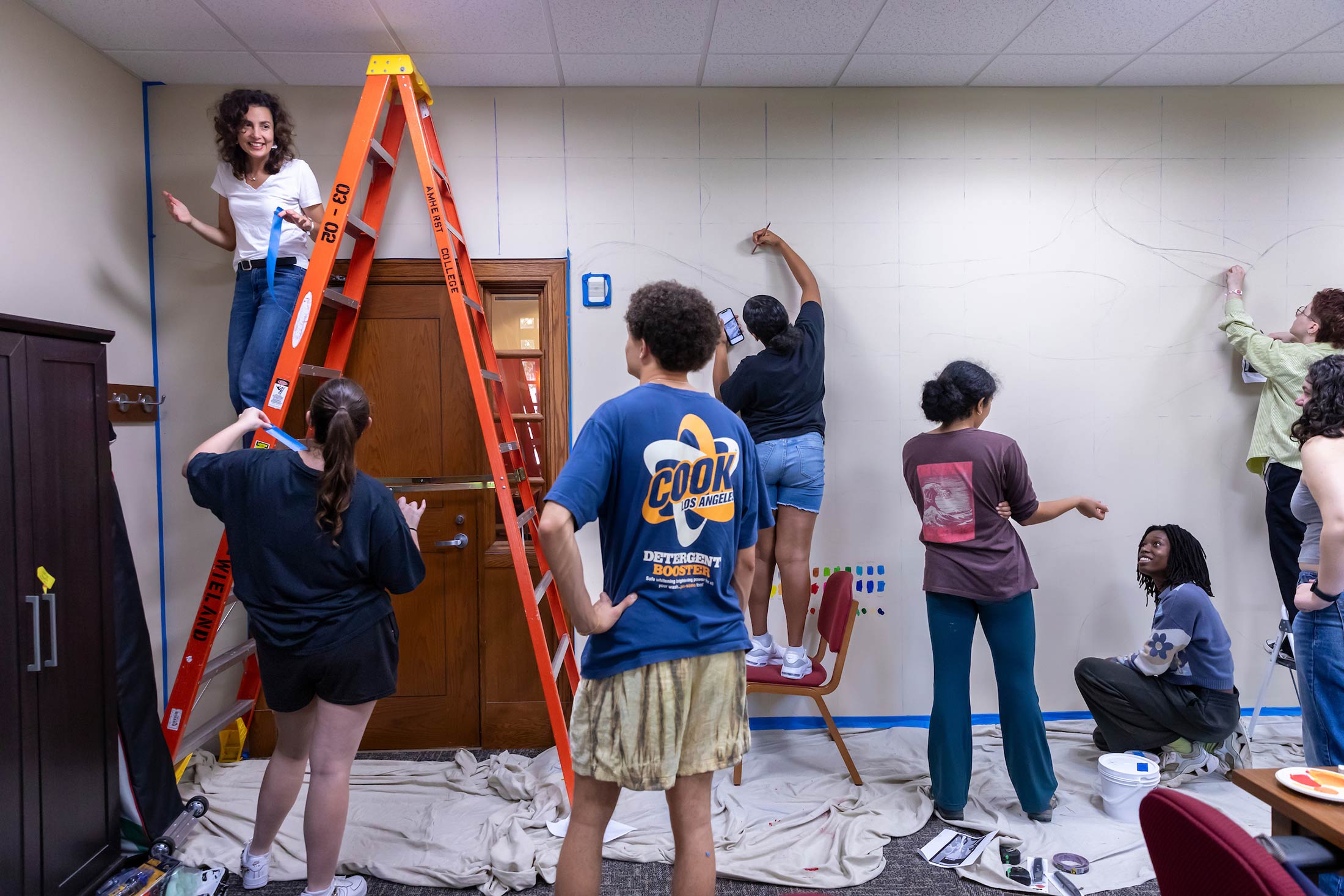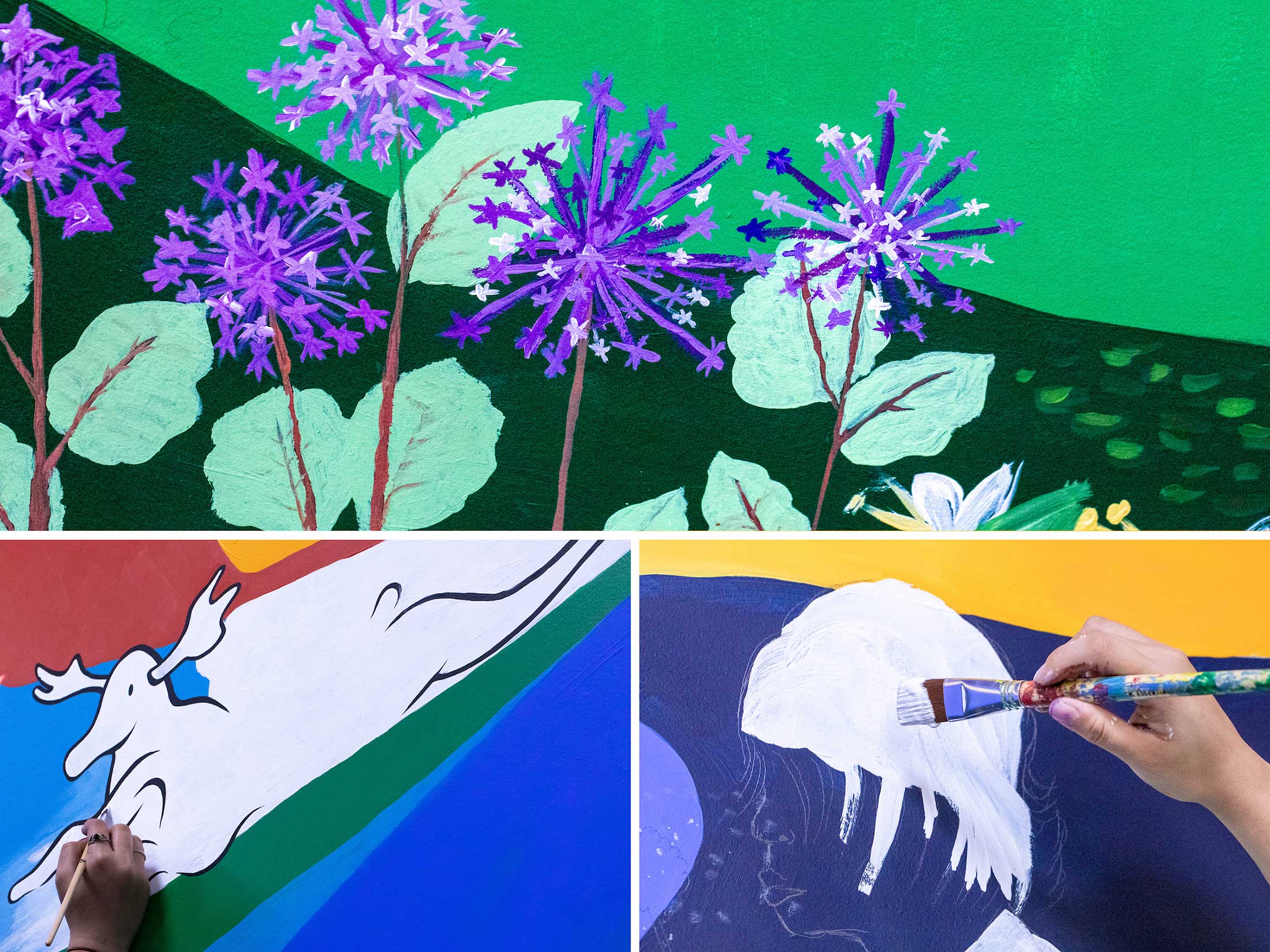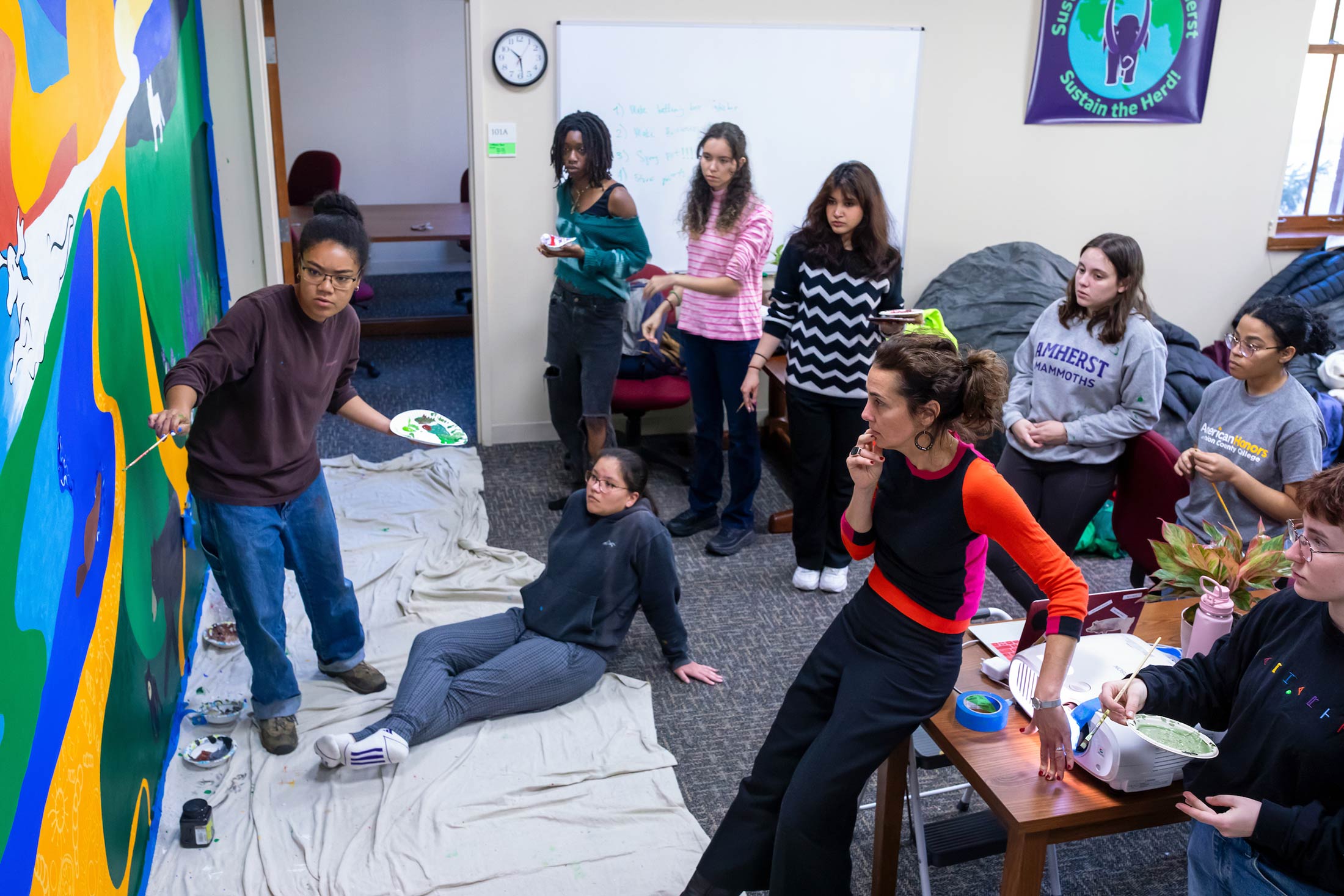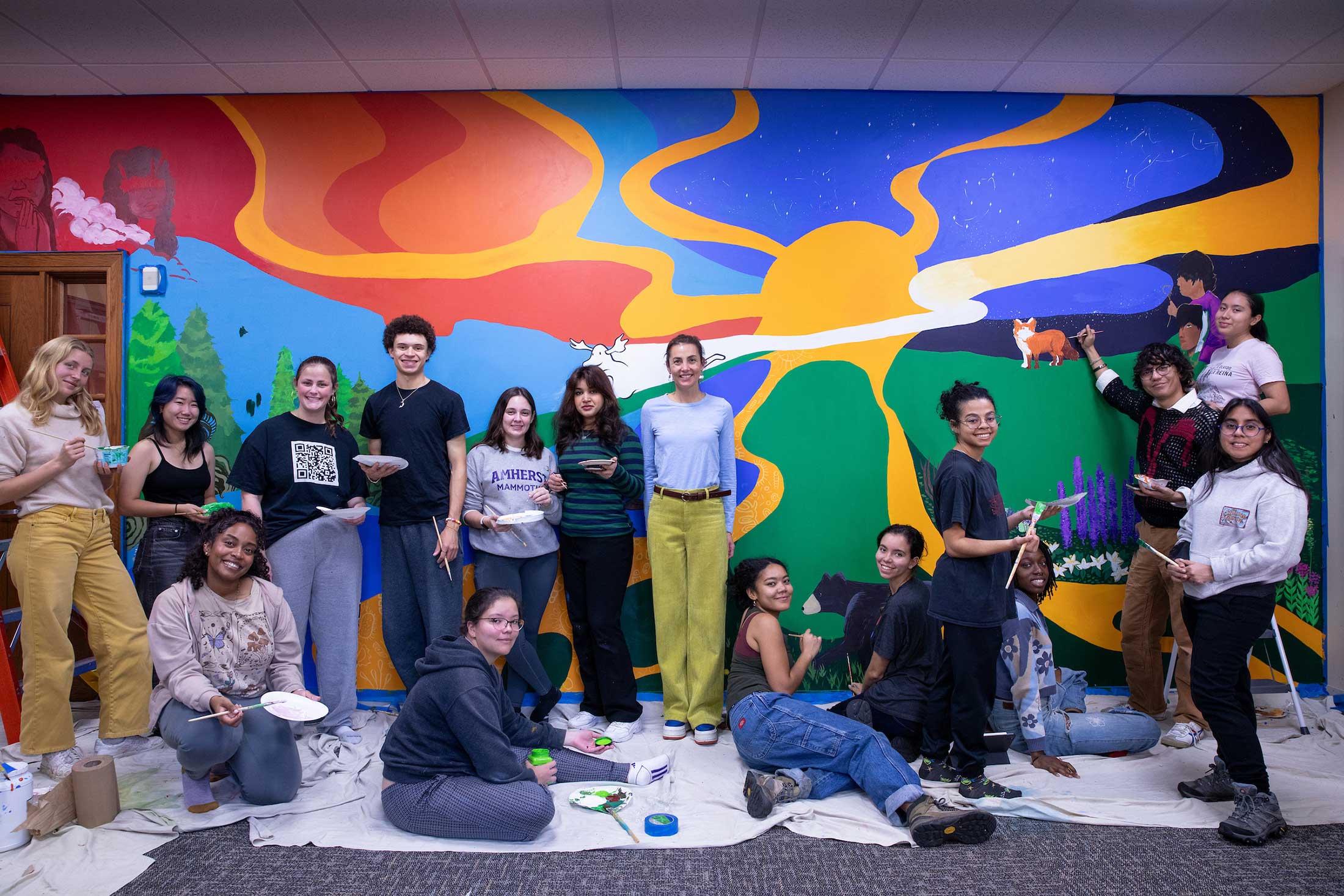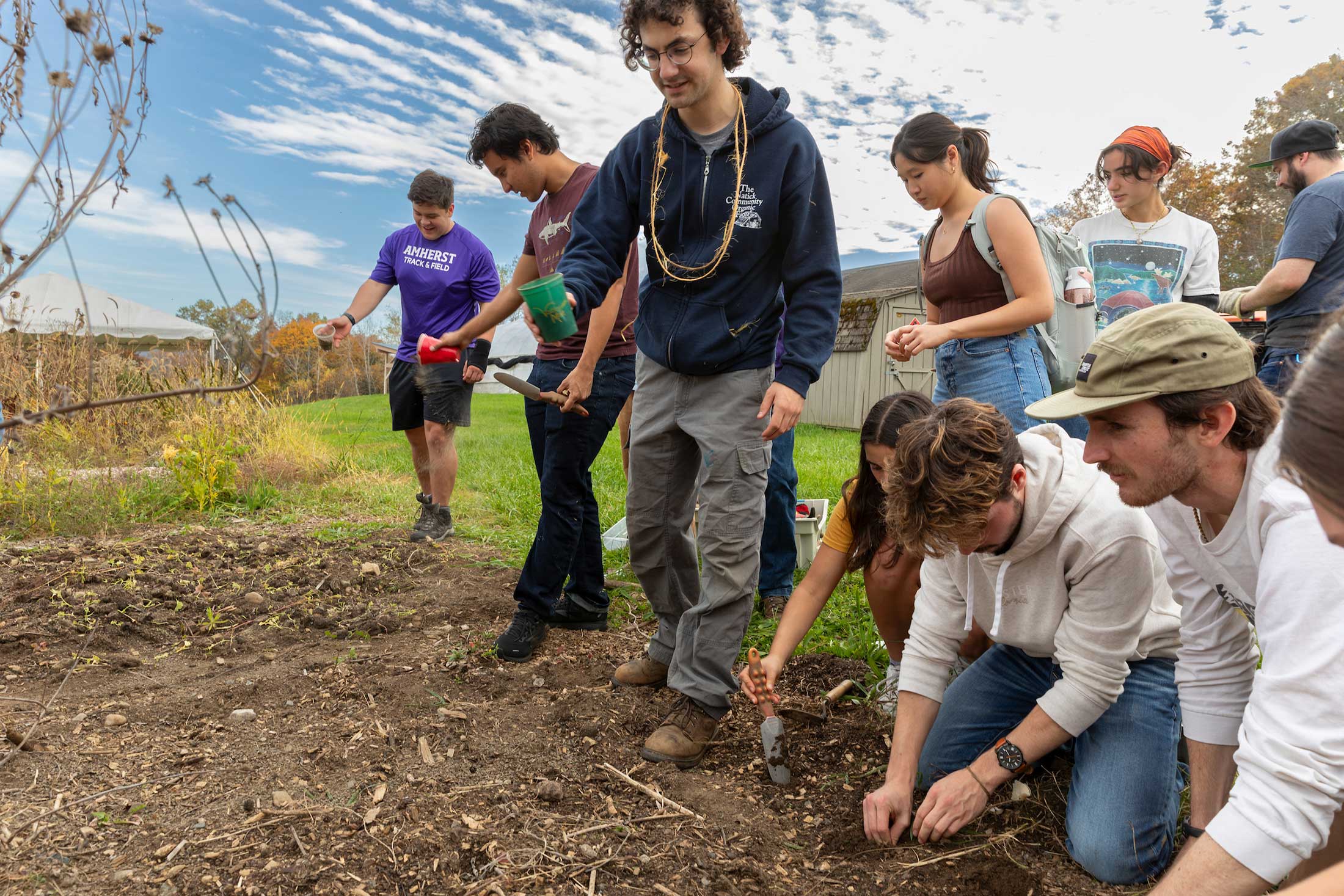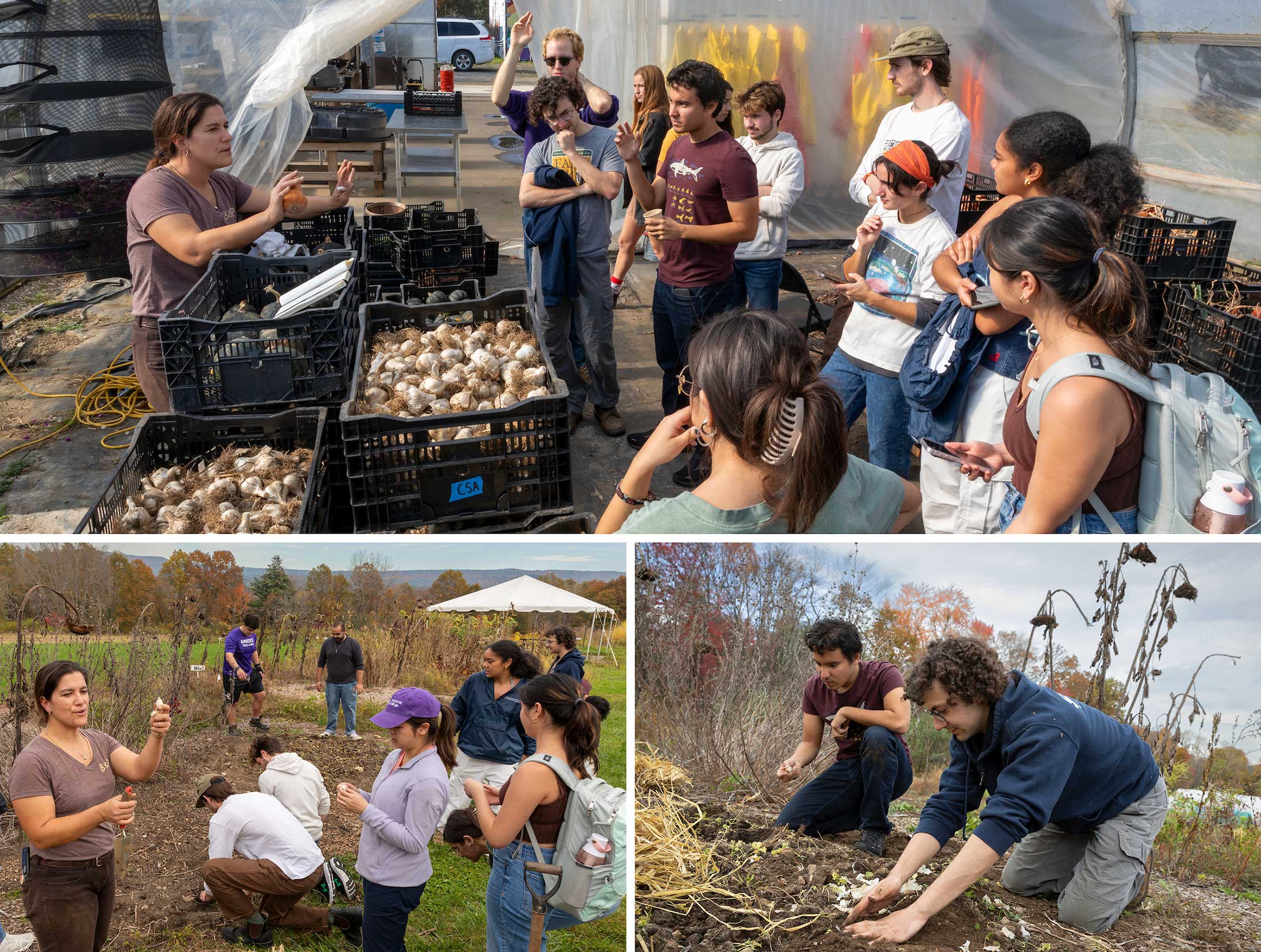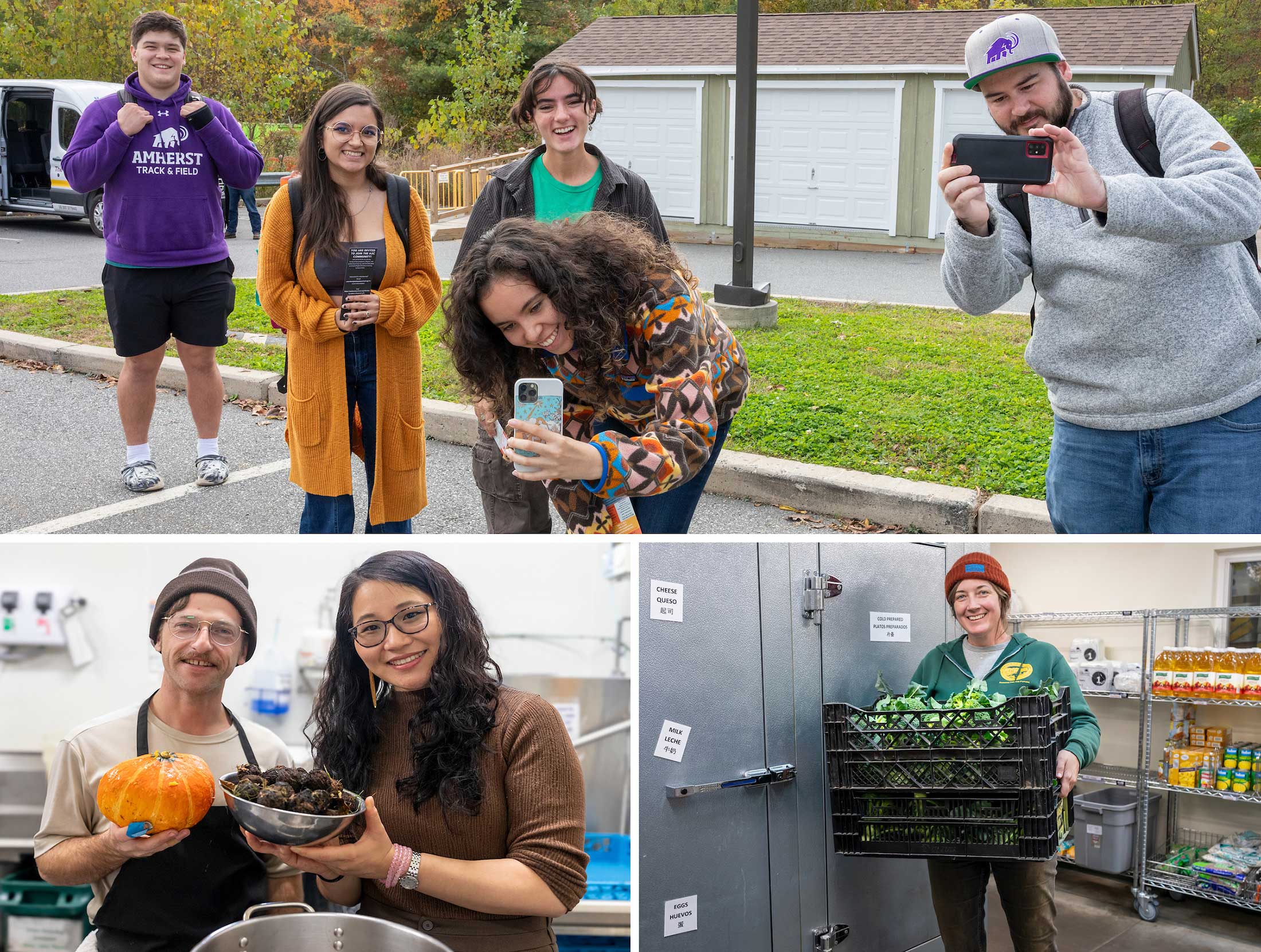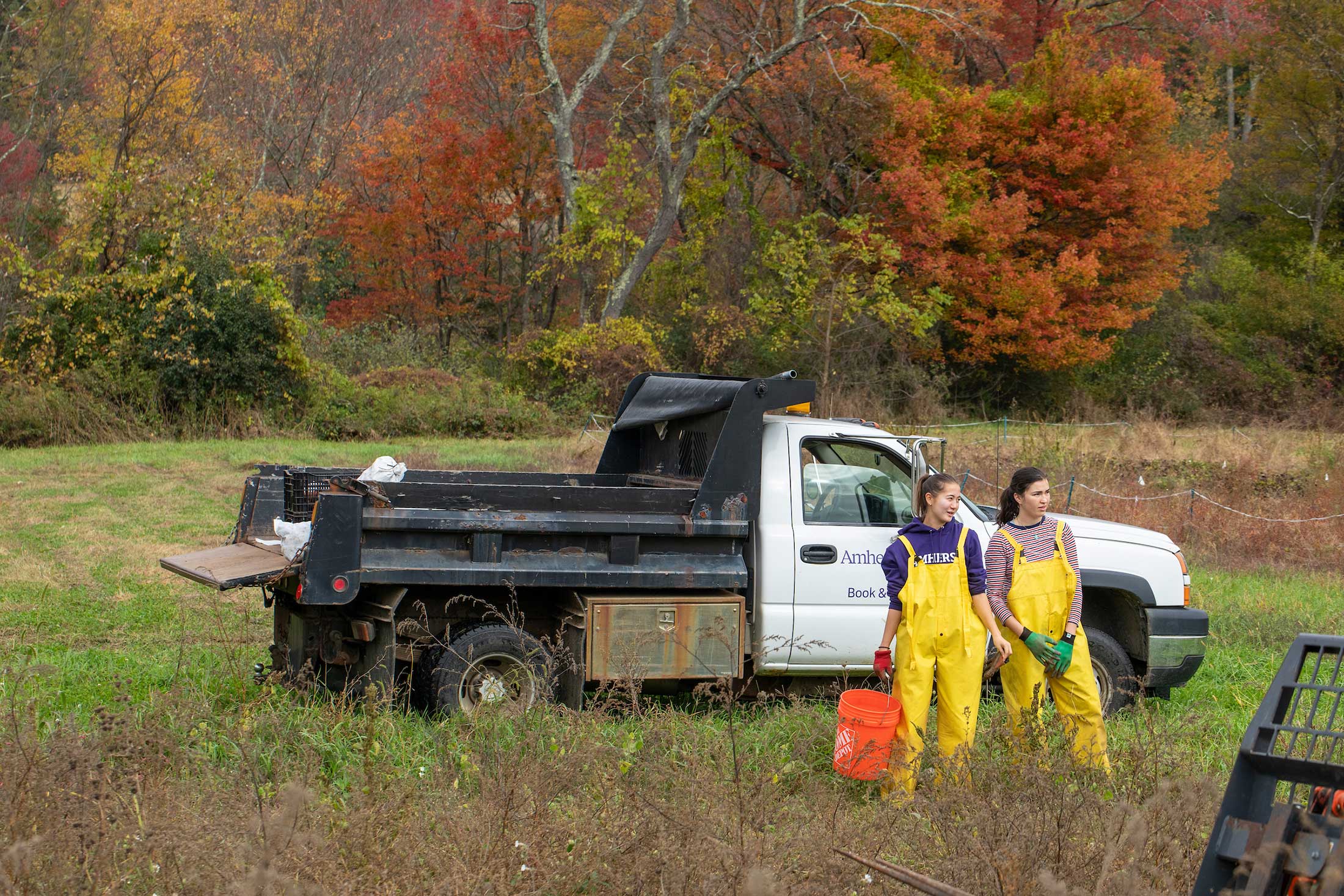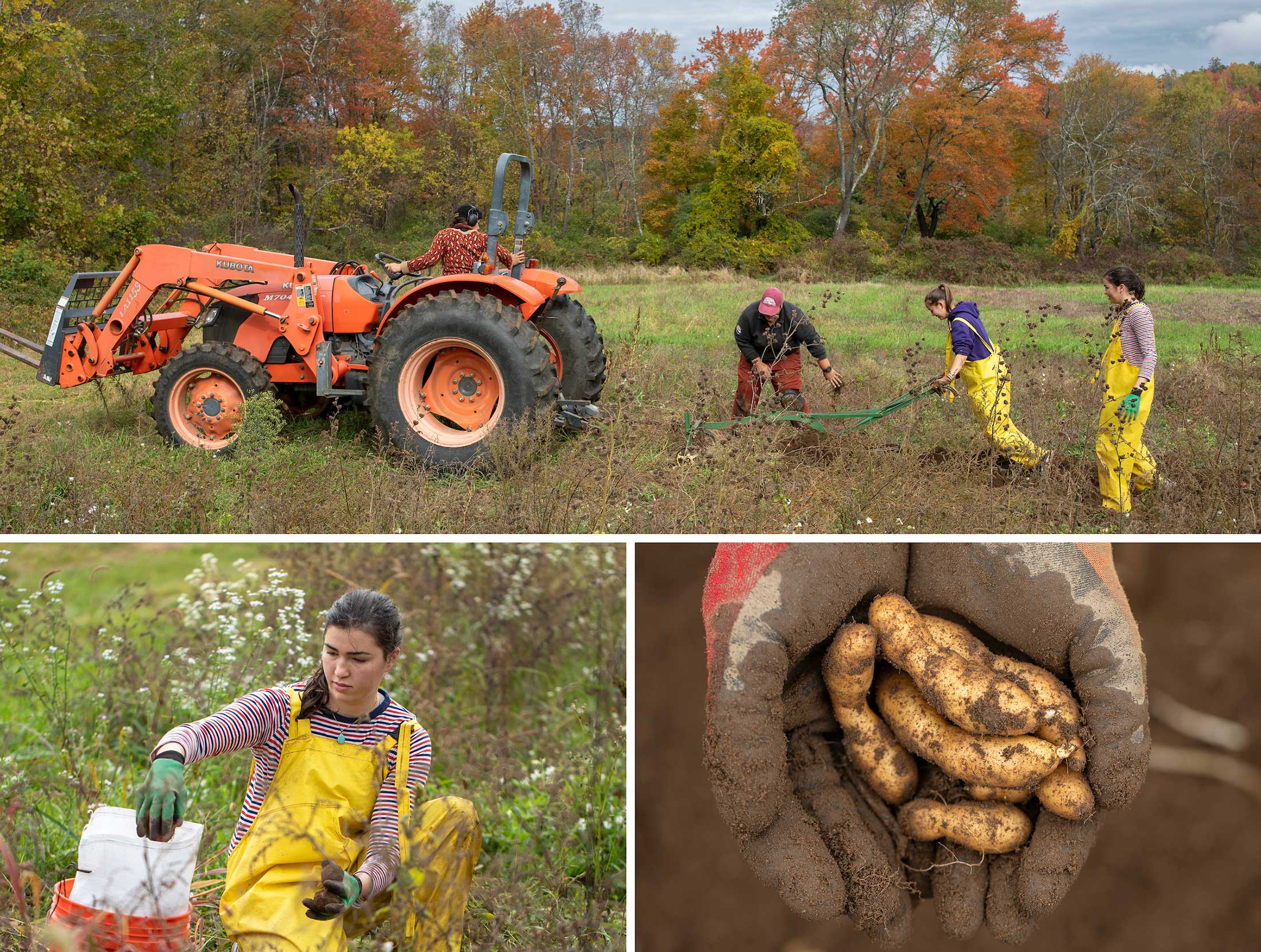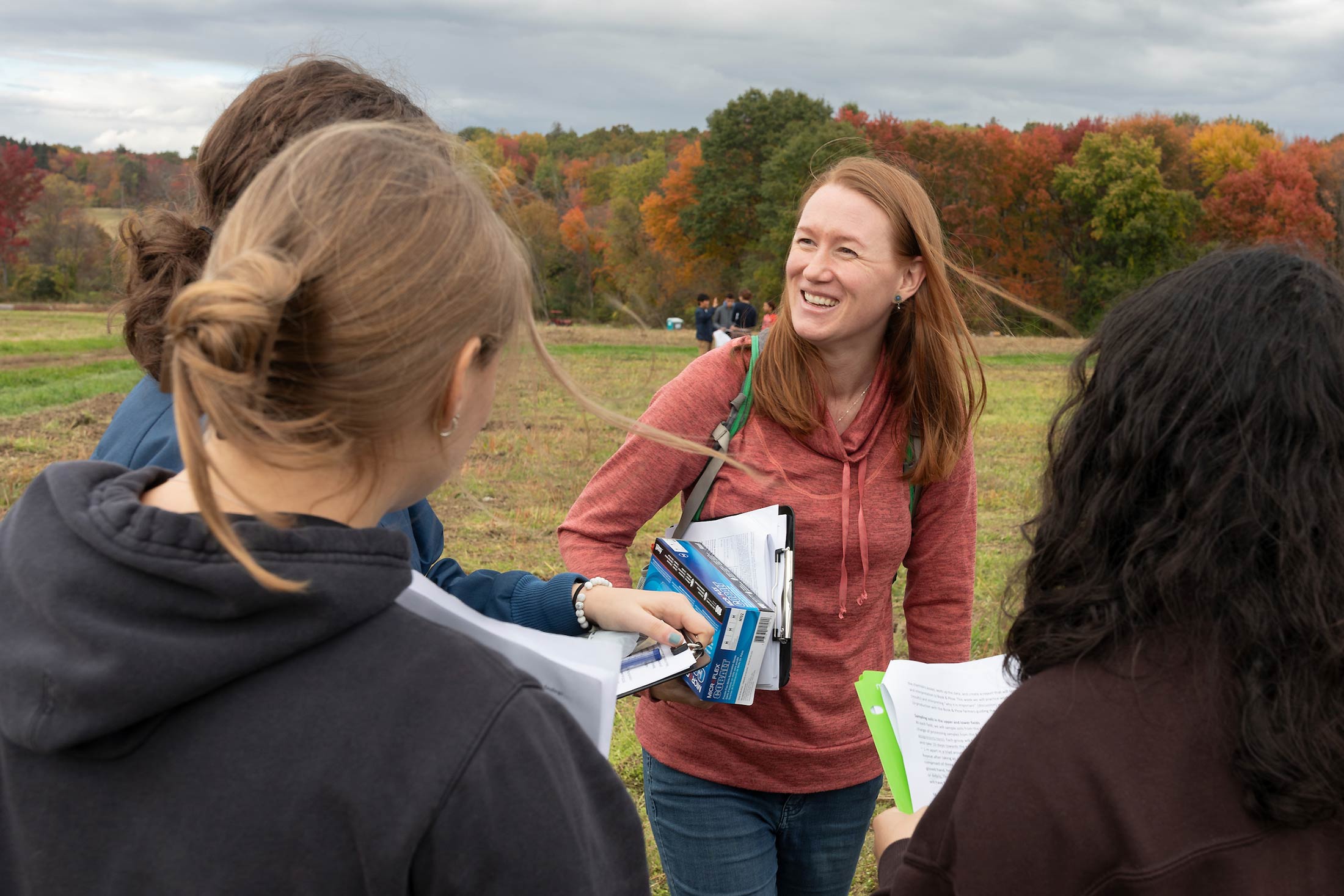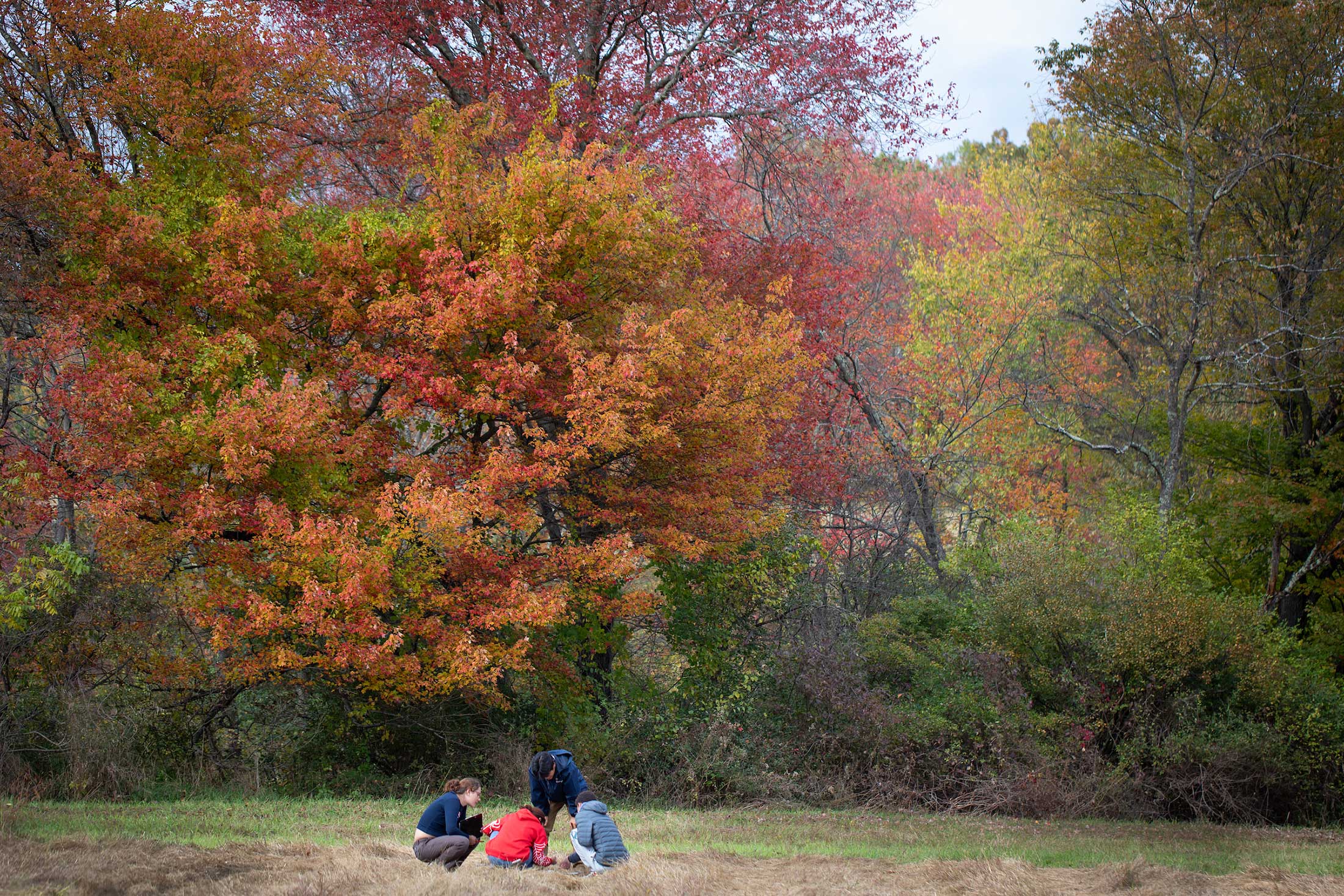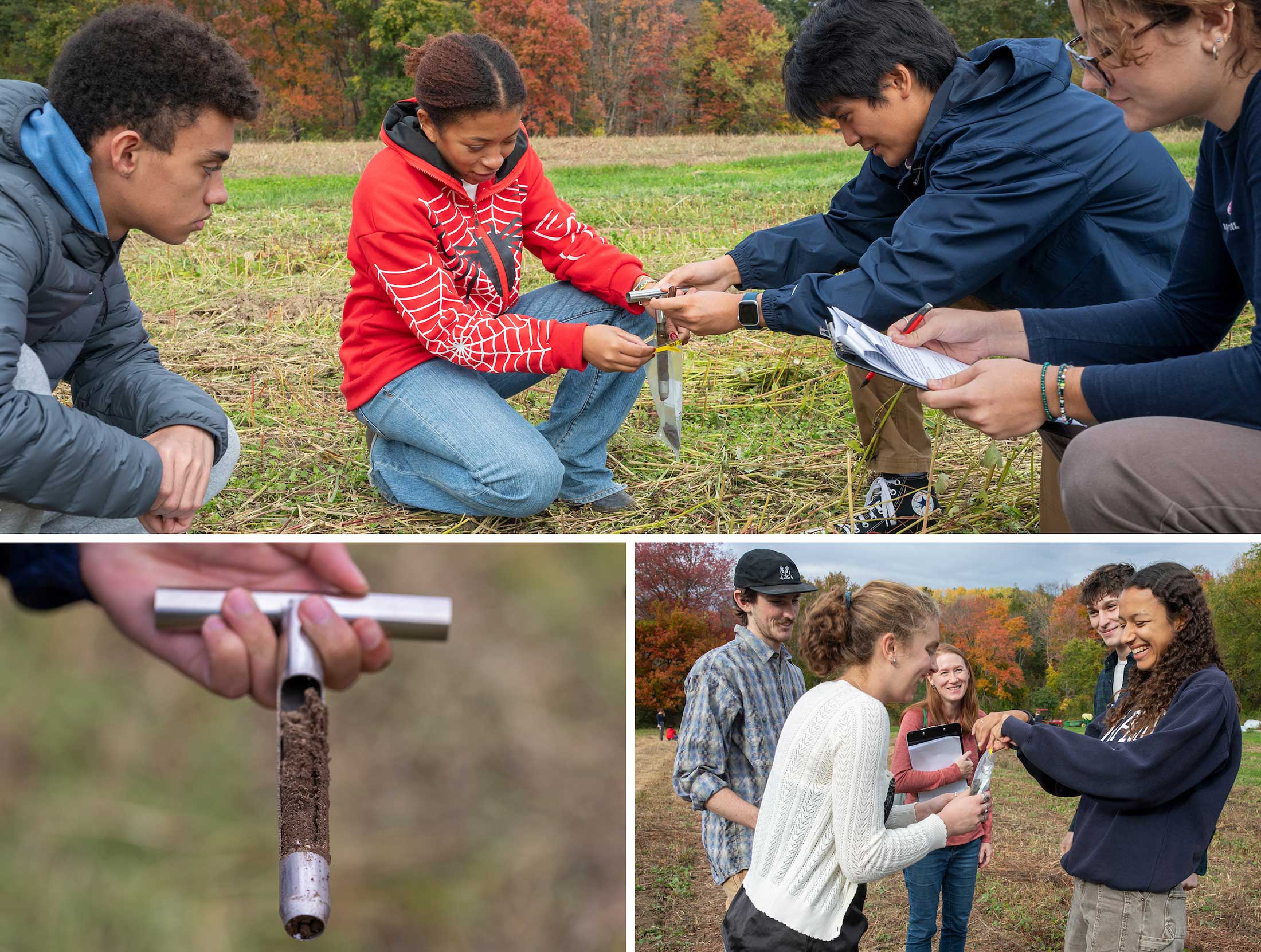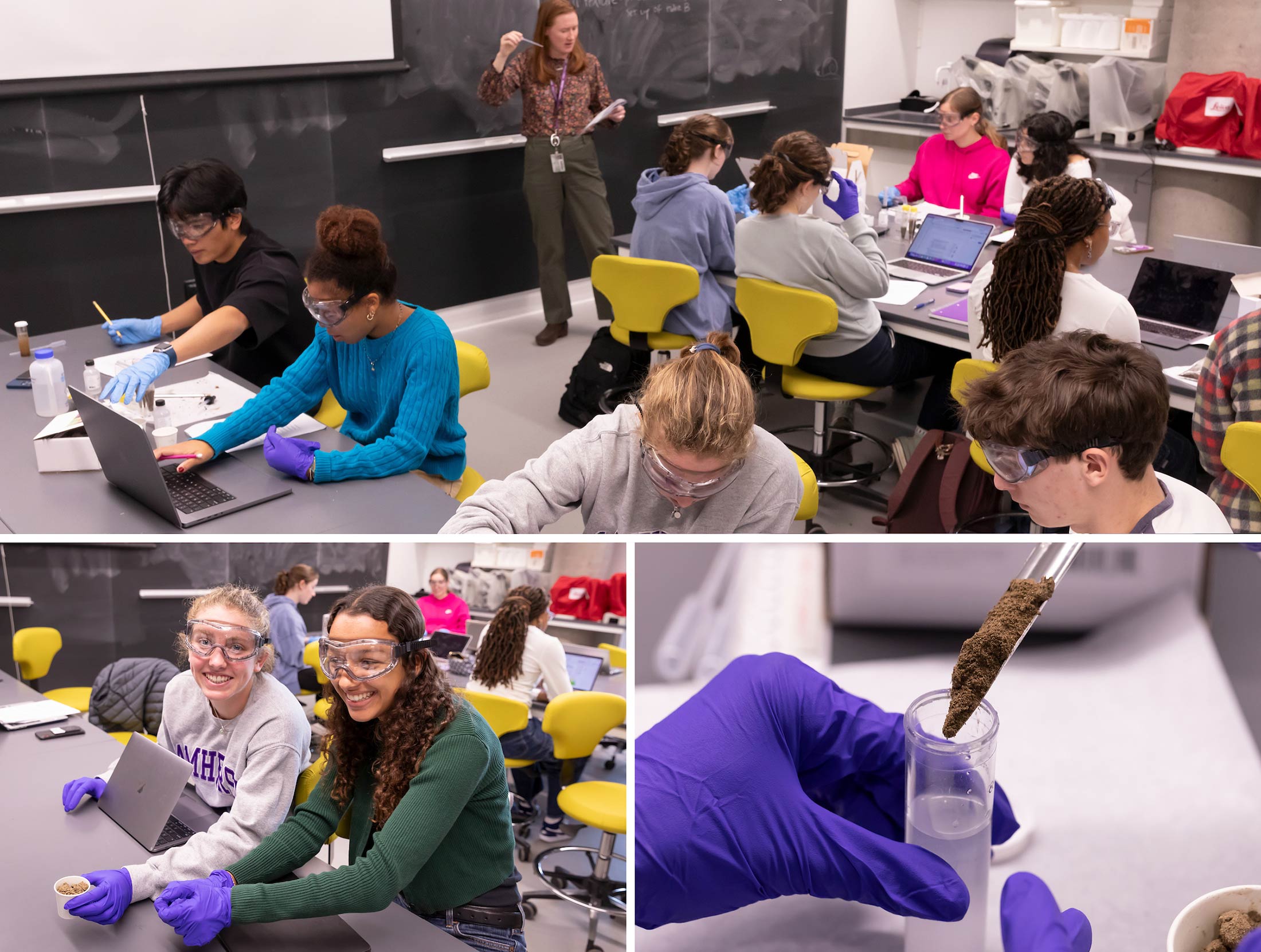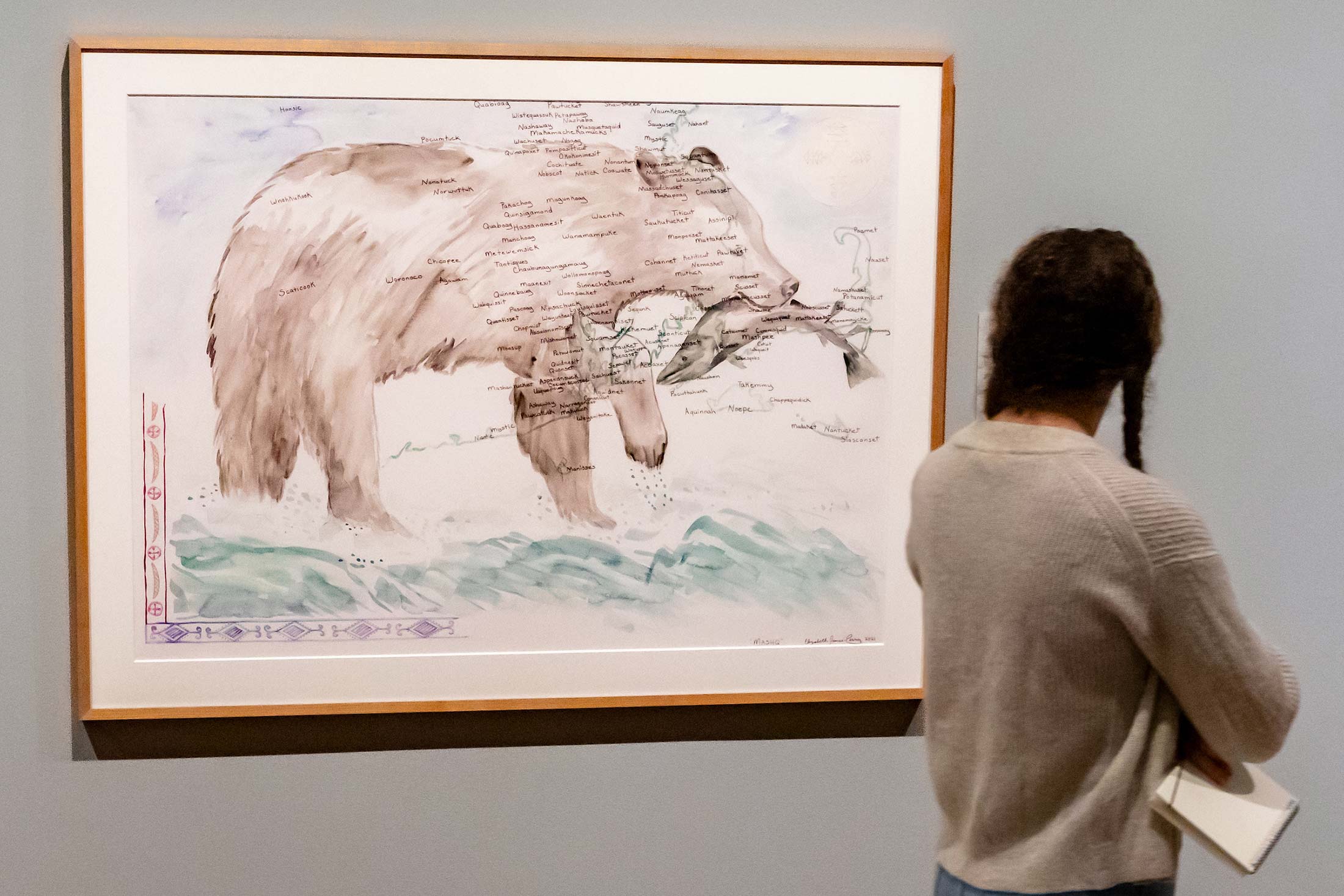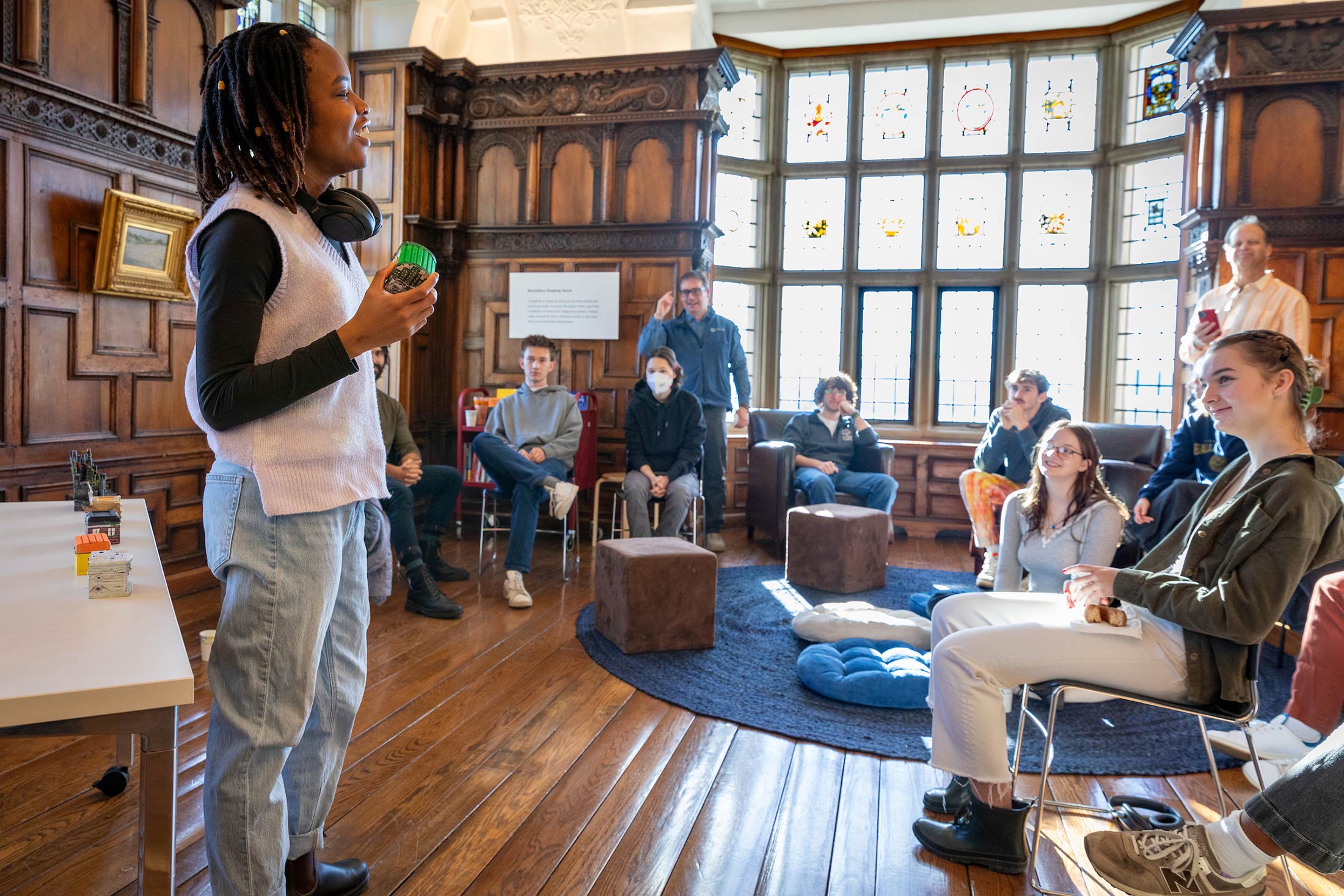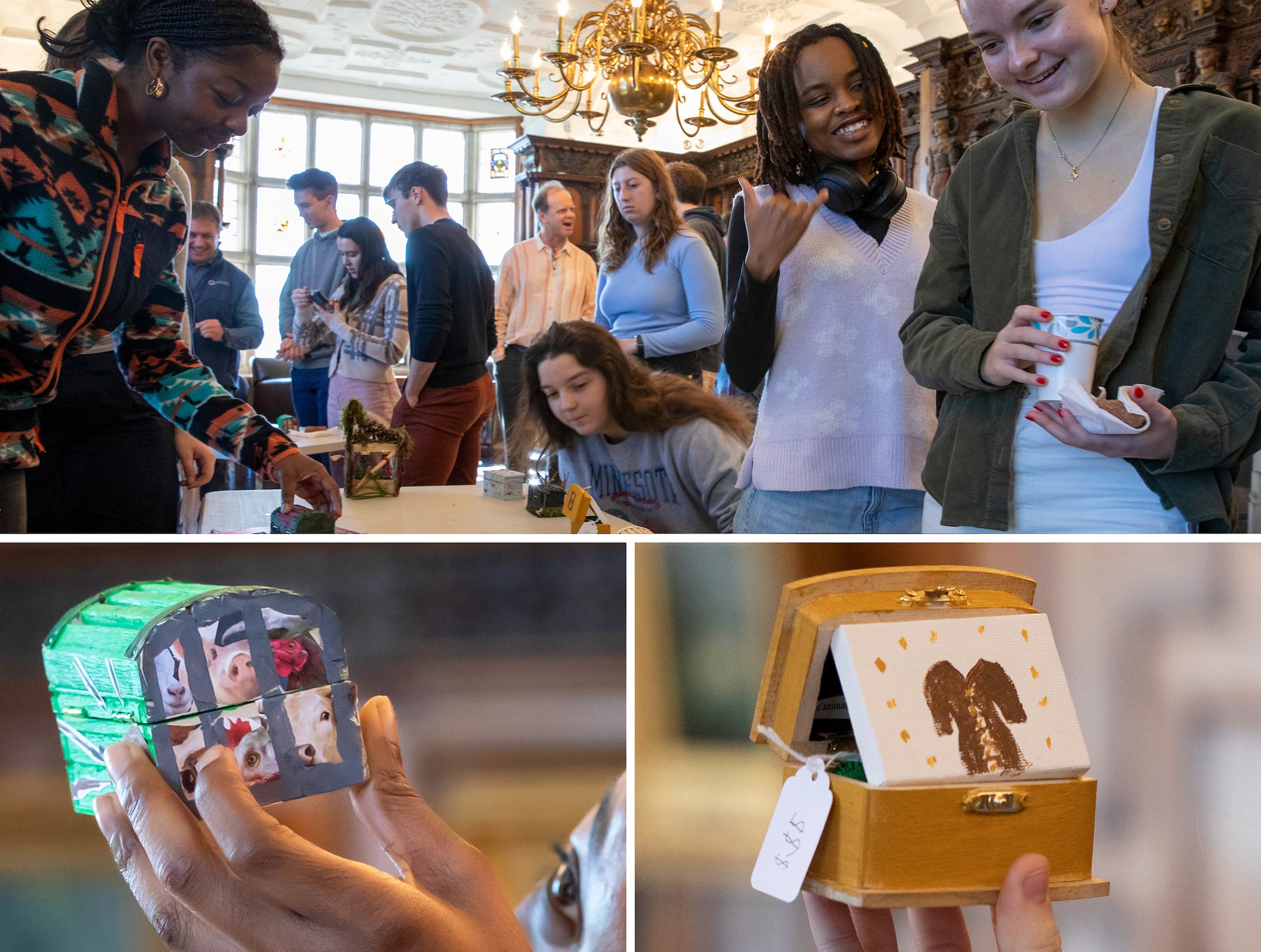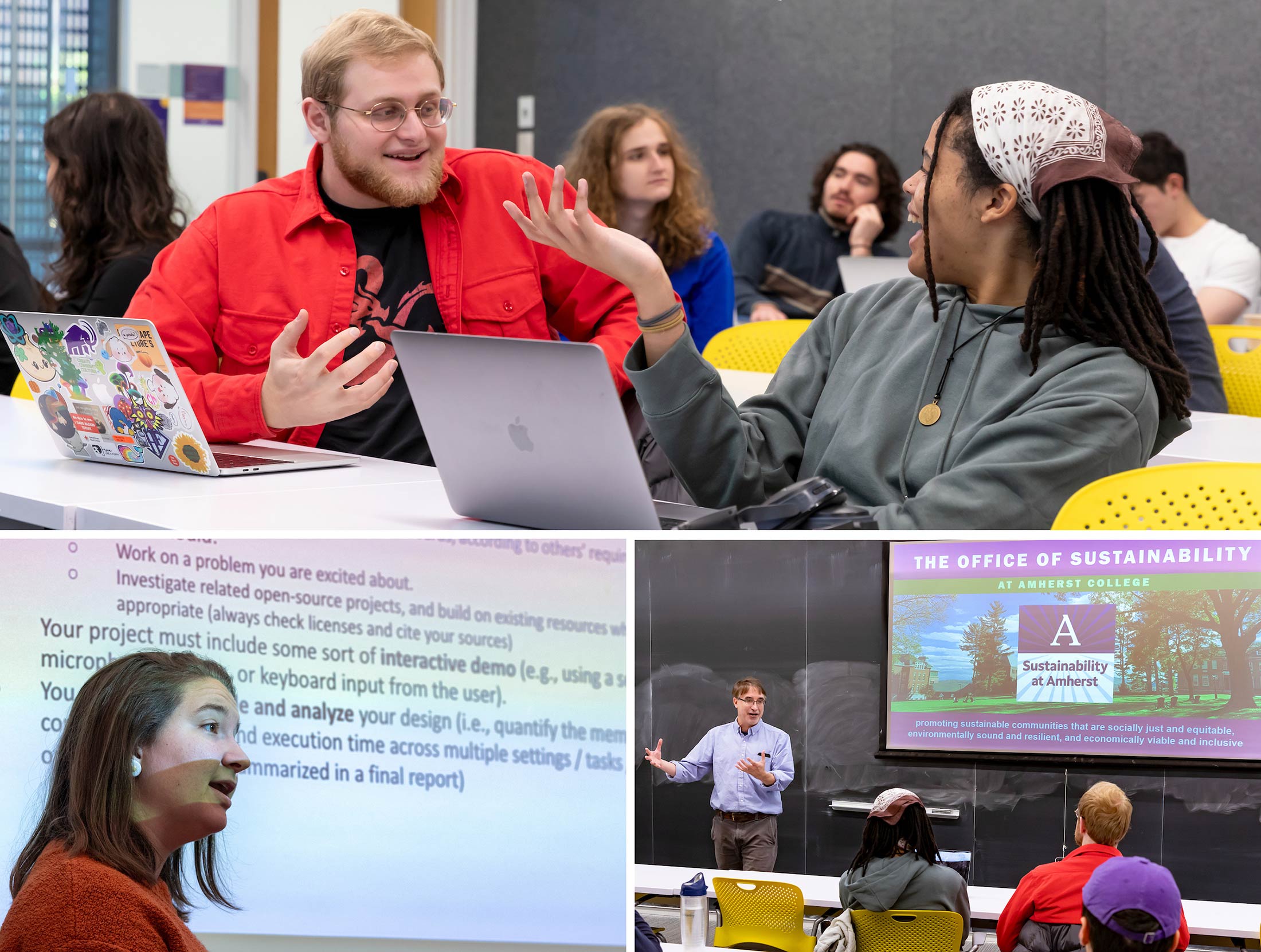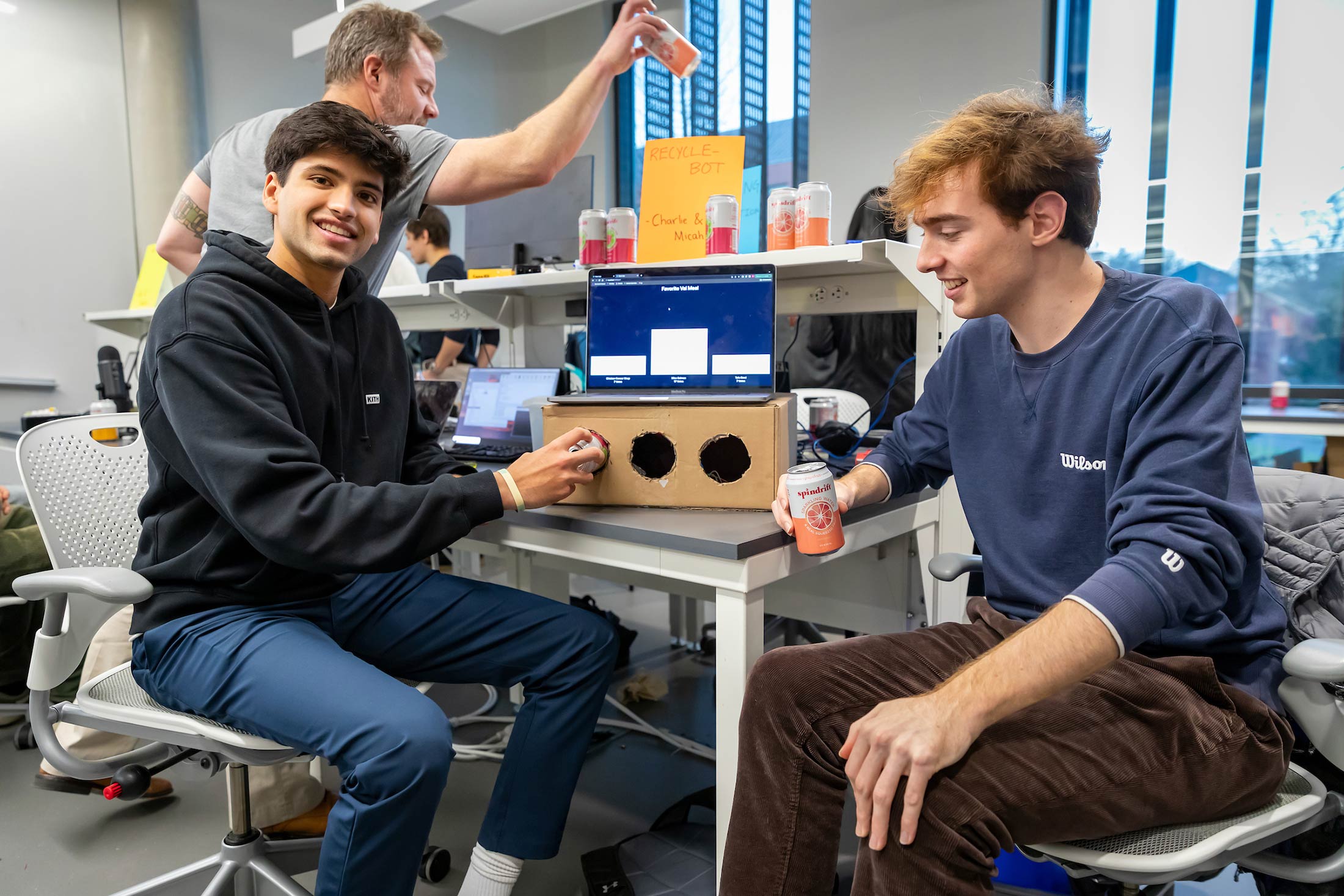Photos by Maria Stenzel
Text by Weston Dripps, Rebecca Hewitt, Maida Ives, Edward Melillo, Lucia Monge, Lillian Pentecost and Li Zhang
Achieving sustainability may be the defining idea of our era. Humanity faces a series of complex, interconnected sustainability challenges, including climate change, racial and socioeconomic inequities, resource depletion and degradation, biodiversity loss and waste. At Amherst, preparing students to tackle sustainability challenges—and find viable solutions—is becoming an increasingly important component of the curriculum. No wonder: the need for change makers, systems leaders, and sustainable solutions has never been so great.
These days, faculty are finding many creative ways to integrate sustainability into their courses by collaborating with the Office of Sustainability, Book & Plow Farm and the Mead Art Museum. Here, photographer Maria Stenzel documents a half dozen such course sessions, with accompanying text from faculty and staff. Read on to find inspiration that sustains. — Weston Dripps, director of the Office of Sustainability
